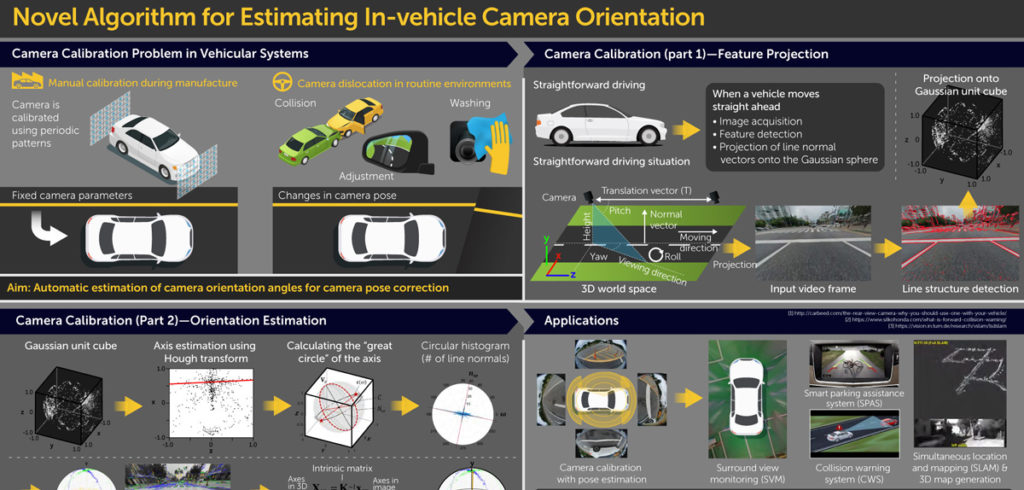Researchers in South Korea have developed a three-step process to improve the safety of autonomous vehicles.
The method proposed by scientists at Chung-Ang University led by Professor Joonki Paik is designed for cameras with fixed focus placed at the front of the vehicle and for straightforward driving.
The image of the environment in front is captured by the camera, and parallel lines on the objects in the image are mapped along the three cartesian axes.
Secondly, a technique called the Hough transform is applied to pinpoint vanishing points along the direction of driving.
Thirdly, using a graph called the circular histogram, the vanishing points along the two remaining perpendicular cartesian planes are identified.
The team tested this method by experimenting in real driving conditions in Manhattan, capturing three driving environments in three videos and noting the accuracy and efficiency of each method.
They found accurate and stable estimates in two cases, but the environment captured in one video showed poor performance due to trees and bushes within the camera’s range of view.
Paik said, “Camera calibration is of utmost importance for future vehicular systems, especially autonomous driving, because camera parameters, such as focal length, rotation angles and translation vectors, are essential for analyzing the 3D information in the real world.”


